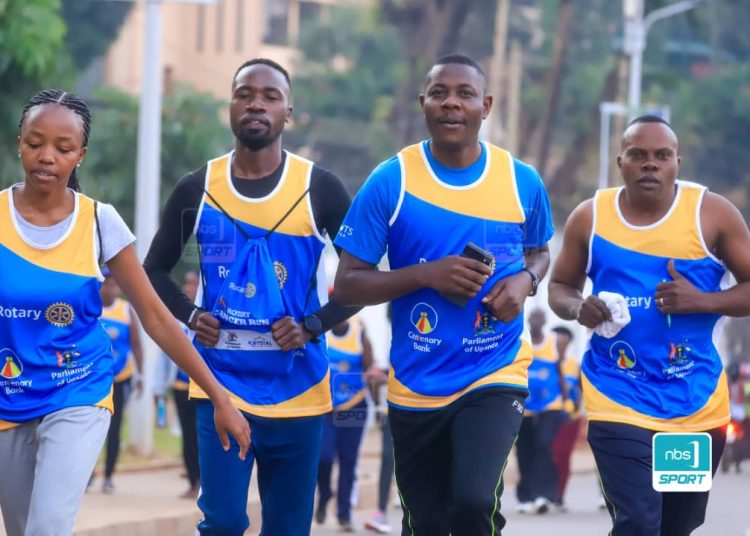Kololo Independence Grounds this morning hosted the 12th annual Rotary Cancer Run, drawing thousands of participants. This year’s run had a global reach, with people joining in from various locations across Uganda and key cities worldwide. Funds from previous events supported a Cancer Ward at Nsambya, catering to over 800 patients annually, and a Mengo Hospital blood bank supplying 1800 units per year.
Under the theme “Run for Hope,” this year’s aim was to raise UGX 2 billion shillings dedicated to constructing two bunkers at St. Francis Hospital Nsambya, housing LINAC cancer testing and treatment machines, crucial in the fight against cancer in Uganda.
Fabian Kasi, Centenary Bank’s Managing Director, addressed participants at the start, emphasizing the strength found in unity when combating cancer. He stated, “Cancer is a formidable foe, but together, we are even stronger. The proceeds from this marathon will significantly contribute to vital research, essential treatment, and support for those affected by this disease. Every step taken today symbolizes hope and solidarity.”
Kasi also expressed gratitude to the dedicated participants for their achievements, including the construction of a 36-bed cancer treatment center, all made possible through their collective efforts.
Christine Namayanja, Chair of the Rotary Uganda organizing committee, extended her heartfelt thanks to Ugandans for their steadfast support in the fight against cancer. She highlighted the continued growth of the Rotary Cancer Run, attracting over 50,000 runners annually.
This year, the run saw increased participation from Ugandans living abroad, thanks to a partnership with the Ministry of Foreign Affairs. This collaboration aimed to boost involvement in countries with Ugandan diplomatic missions.
The impact of past Rotary Cancer Runs is evident. In 2012, the Rotary Cancer Run became the primary fundraising method for the Uganda Rotary Cancer Programme. This year’s aim is raising 2 billion shillings for the Linear accelerator machine, which carries a total cost of 13 billion shillings.





























